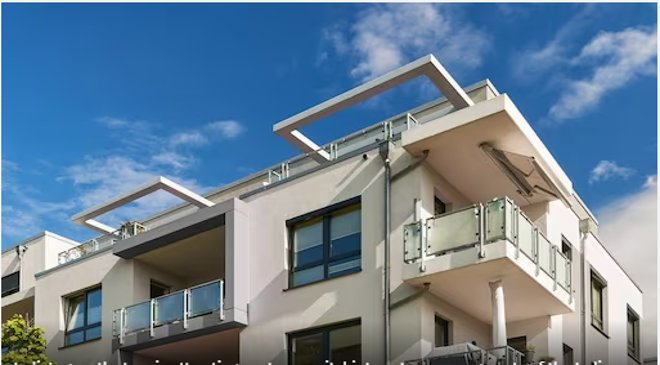Rapid urbanisation and a rising population contribute to increased demand for affordable housing units in major Indian cities
Also Read– Indian Railways: Know how to get a confirmed railway ticket for Holi holidays
The real estate in India is currently rapidly emerging as an investment of choice by the increased number of investors, both Indian and NRI, in a background of market volatility and equity markets stagnating amidst increasing inflationary pressures. Due to the attractive rental yields and the potential for further price appreciation across India in both the metros and other cities, real estate is seen as a good bet. Rapid urbanisation and a rising population contribute to increased demand for affordable housing units in major Indian cities.
Despite real estate prices already appreciating between 10 per cent and 30 per cent across India in 2022, India’s growth story is attracting venture capital (VC) interest across segments of the Indian real estate sector. In a recent survey conducted by the CII, 59 per cent of respondents are strongly inclined to invest in real estate, while only 28 per cent continue to prefer investing in Indian equity markets. Nagpur, Coimbatore and Indore have the highest year-over-year rental demand, propelling the growth of India’s commercial real estate sector. This expansion is also evident in the office leasing market, which is anticipated to increase by 10 per cent to 15 per cent in the coming fiscal year. Some of the factors impacting this trend include:
Read More: NHAI Reduces Toll Tax On Panipat-Rothak National Highway, Know Revised Rates
Growing Social Infrastructure in Tier-II and Tier-III cities
A significant trend has been the rising demand for modern office space and the emerging trend of urban and semi-urban housing. In addition, the expanding e-commerce sector in the country is driving up the demand for storage facilities, which is providing a boost to the market. In addition, the increasing use of telecommunication services, the implementation of 5G standards, and the localisation of data have increased the demand for data storage facilities. In turn, this positively affects the demand for resilient data centre infrastructure, bolstering the market growth.
Increased acceptance of hybrid models in 2022 has resulted in a huge upsurge in major cities for office space. According to a survey, the office market’s net absorption in the top-7 cities, including Mumbai, Bengaluru and Hyderabad, reached a three-year high of 38.25 million square feet in 2022. Moreover, the net absorption for 2022 has exceeded the five-year pre-pandemic average (2015-2019) by 3.1 per cent, demonstrating the robustness of the Indian office markets.
Increase in NRI Investment
Foreign and domestic investors are capitalising on this growth, particularly in their own cities, with millennials comprising roughly half of these investors. Not only commercial real estate but also ultra-luxury apartments and vacation homes have seen an increase in investor interest. The strengthening of the dollar against the rupee incentivises investors to enter the domestic market with enhanced purchasing power. Newer proptech platforms have contributed to this growing interest by revolutionising the real estate industry and enabling the seamless onboarding of individuals regardless of their geographical location. This will continue to attract non-resident Indians to India’s real estate market.
Read More: PAN-Aadhaar Link Not Compulsory For These People
Changes in Policy Environment
Aside from this, various initiatives undertaken by the Indian government, such as investments in smart city projects and tax exemptions for housing loan interest, are anticipated to create lucrative business opportunities for industry investors in the country. By 2030, the demand for Grade-A premium office assets in India is projected to reach 1.2 billion square feet. This expansion is fuelled by various factors, including a high return on investment, increased NRI and FDI investment, and strengthened government initiatives.
Increased Demand for Ultra-Luxury Units and Vacation Homes
With rising household incomes and an increase in the number of Indians among the world’s wealthiest individuals, the ultra-luxury residential real estate market has been booming, with demand frequently exceeding supply. Even in markets such as Mumbai, Delhi, Bengaluru, and Kolkata which have historically had a healthy pipeline of such units, consumers are increasingly opting for projects with amenities comparable to those provided by international developers. This shift in consumption habits has prompted Indian real estate developers to launch new luxury housing projects that cater to this expanding group of domestic investors.
Other key factors, such as India’s emergence as a global IT power, the growth of the e-commerce industry, etc., would result in a significant increase in demand for spaces such as data centres and sophisticated warehouses. Commercial spaces will increase in Tier-II and Tier-III cities in 2023, acting as a significant employment-creating catalyst. In 2022, the office, warehouse, residential, and retail real estate sectors collectively attracted private equity investments totalling $5.1 billion. This demonstrates the industry’s optimism regarding the sector’s growth.
However, the developer community must look to achieve the same construction and design standards as developed nations. Increased focus on raising capital through additional channels, such as real estate investment trusts (REITs), attracting more Indians to actively invest in the country’s real estate economy.
With REITs providing proportional ownership of income-generating real estate assets, more Indian developers will need to establish their own REITs, educate investors on their potential for long-term value creation, and seek more investments via this route. This will attract more foreign investment and leverage the country’s large population to establish a sustainable financing model that will propel the Indian real estate industry to new heights in 2023.





































